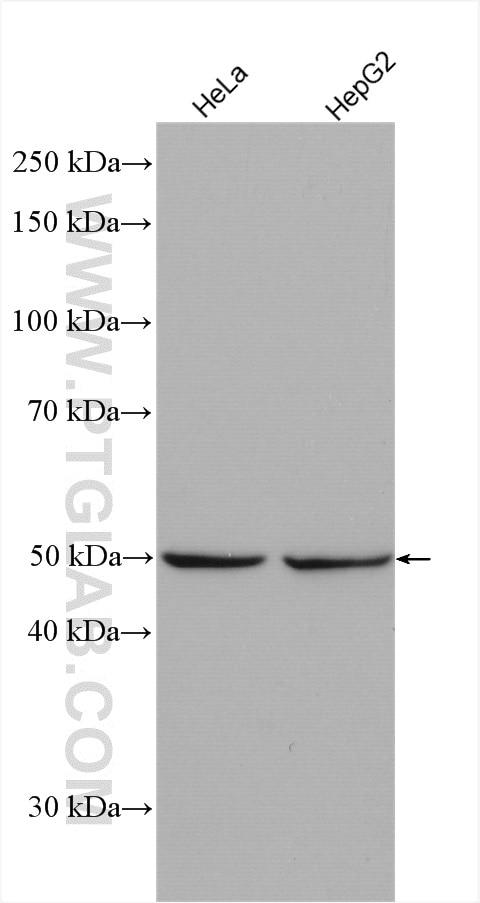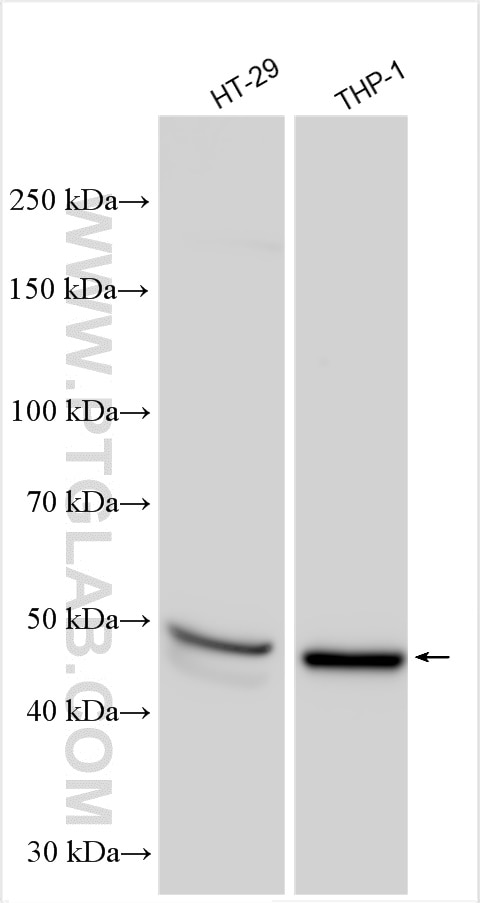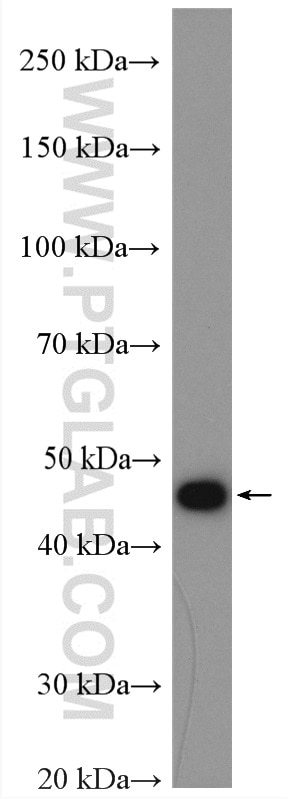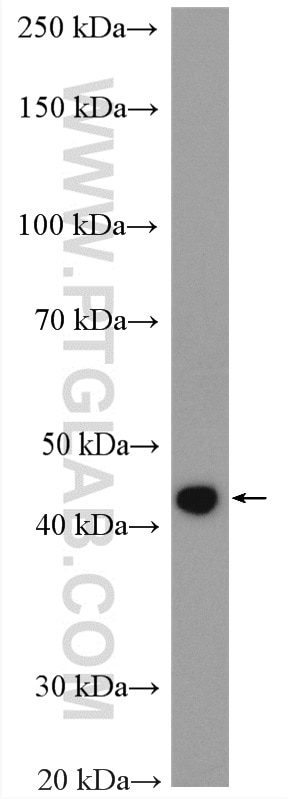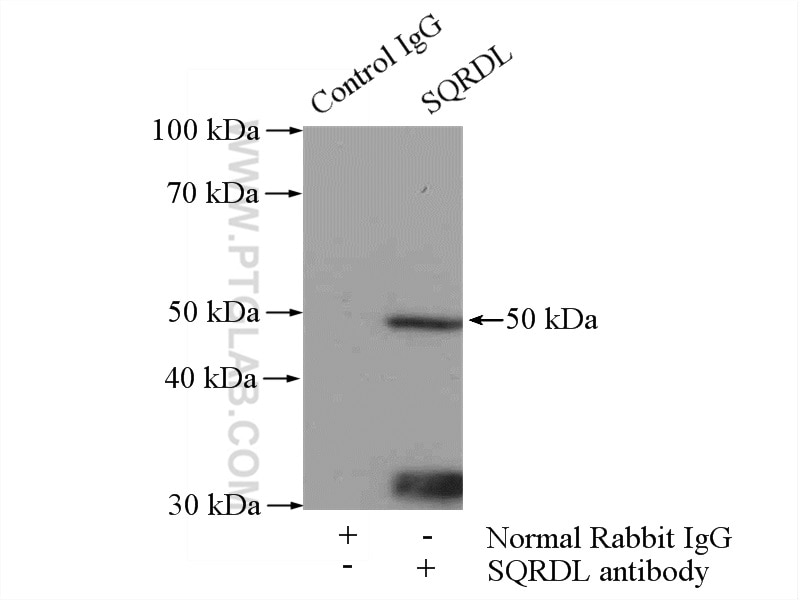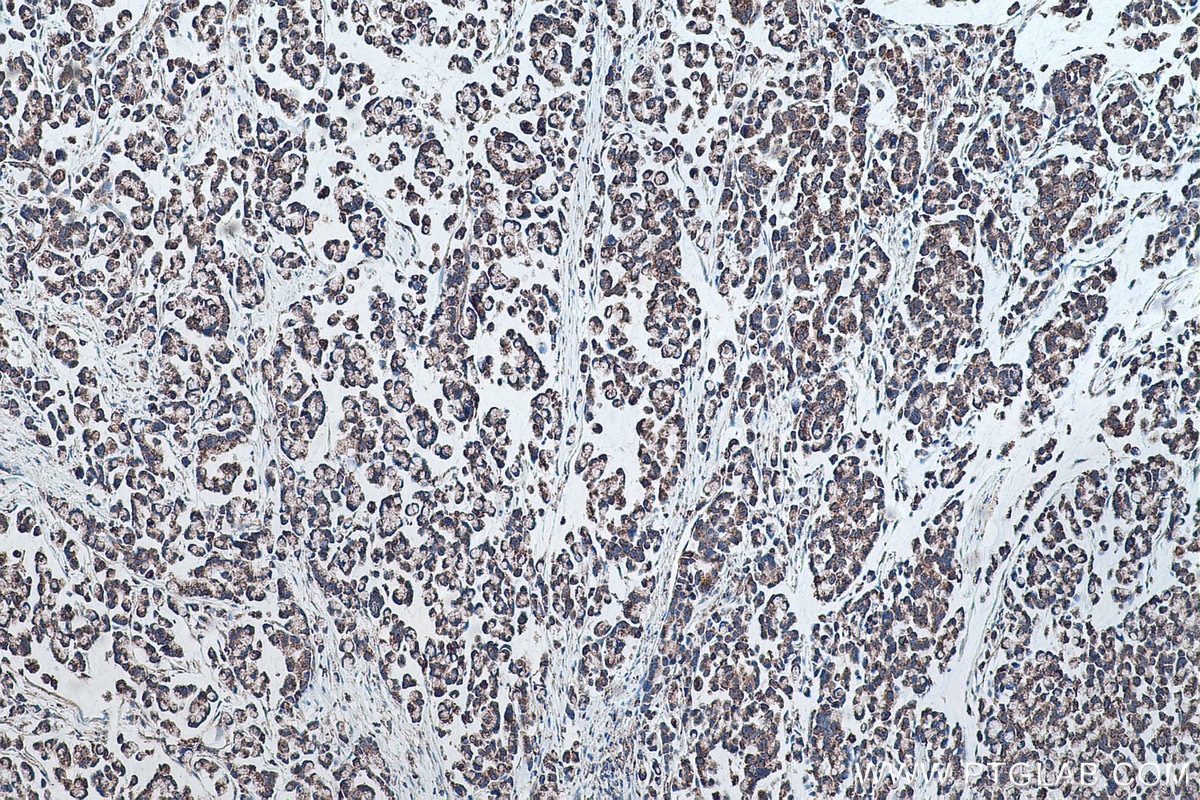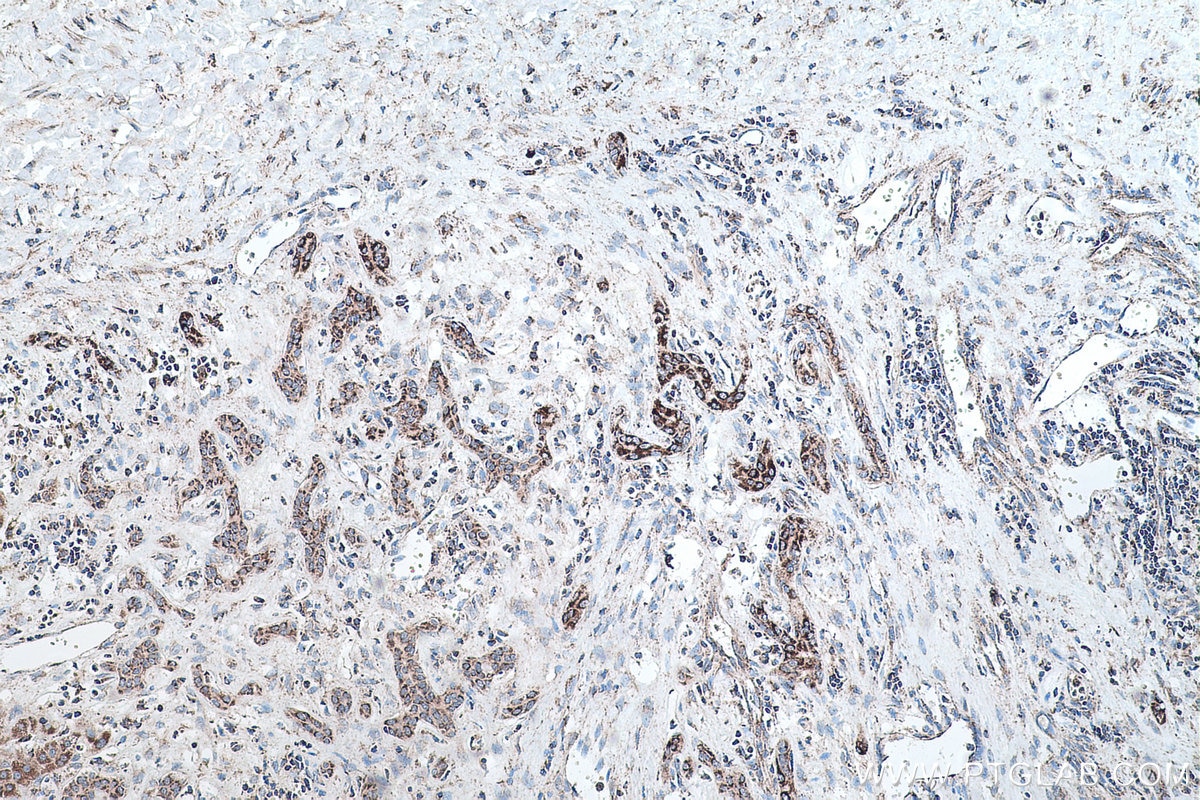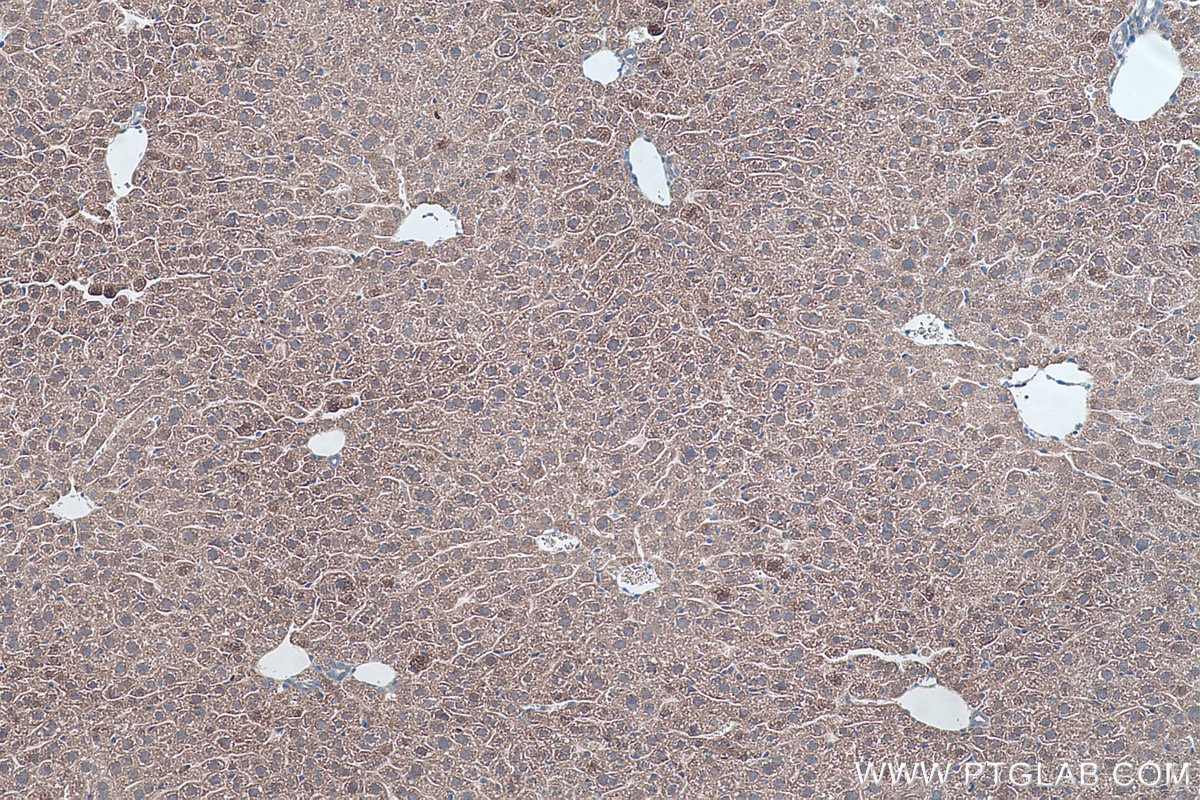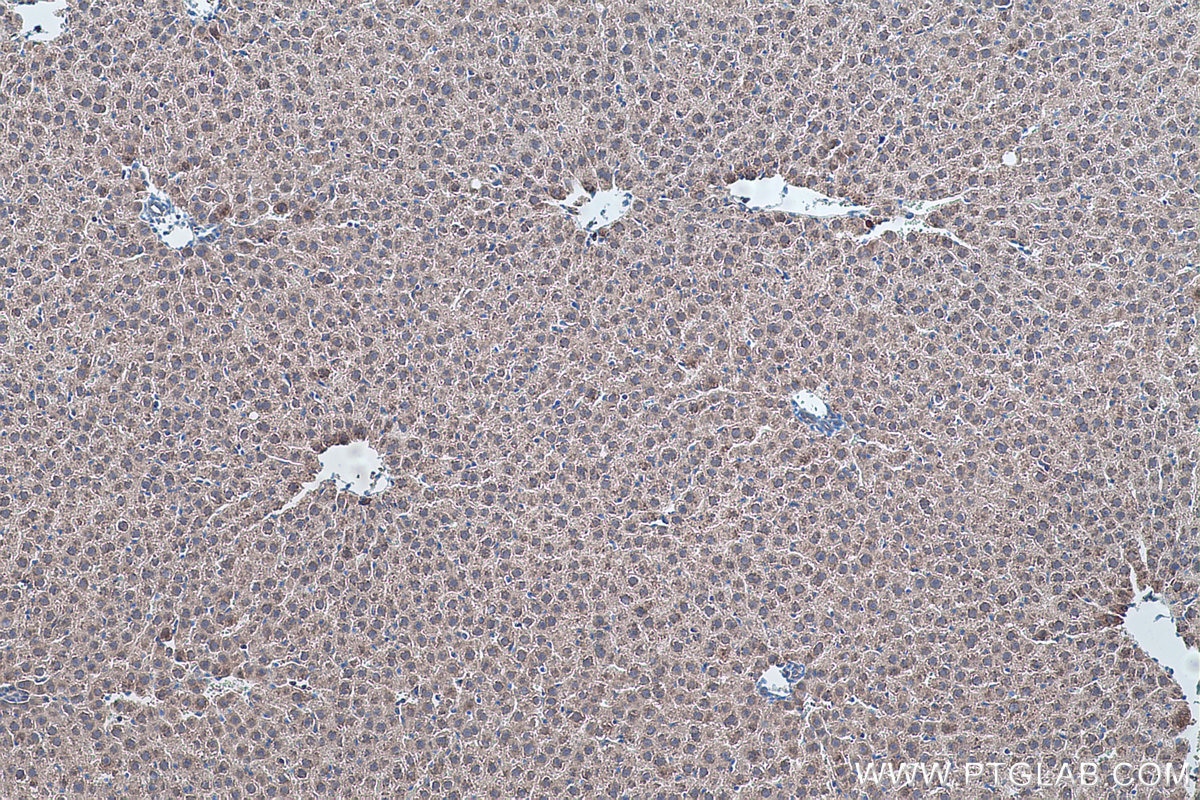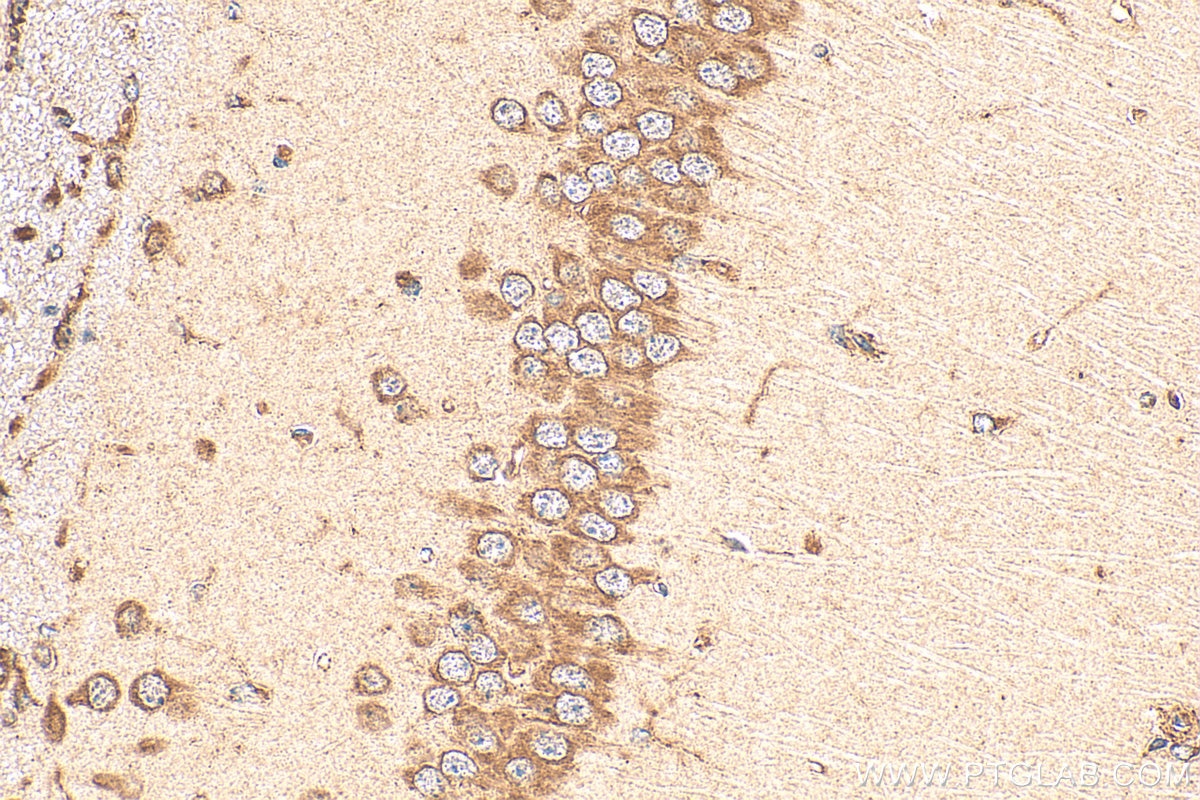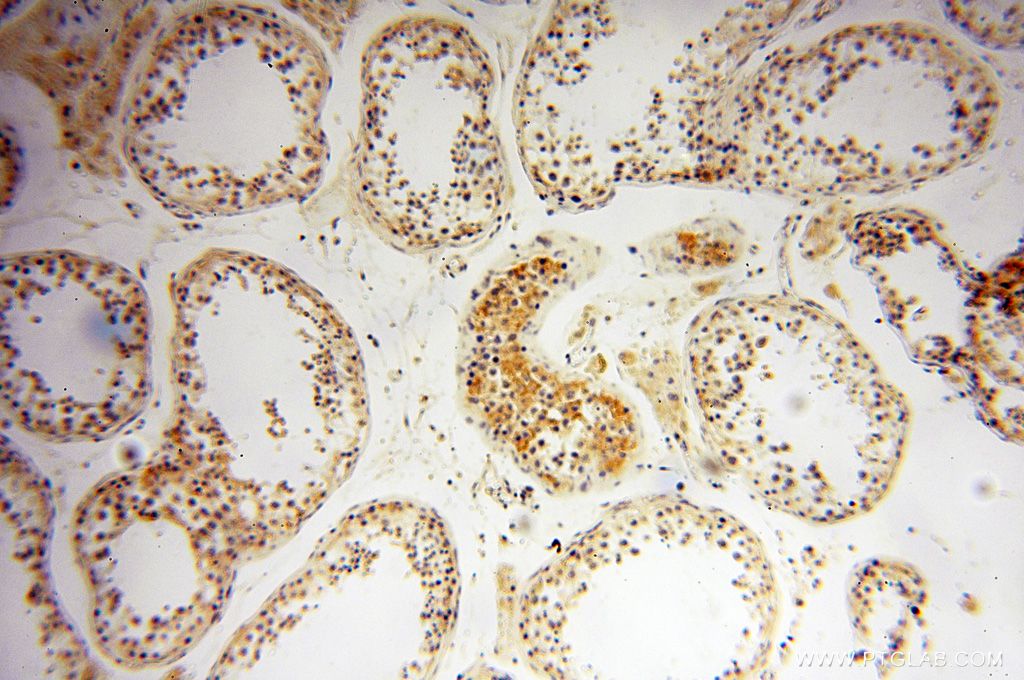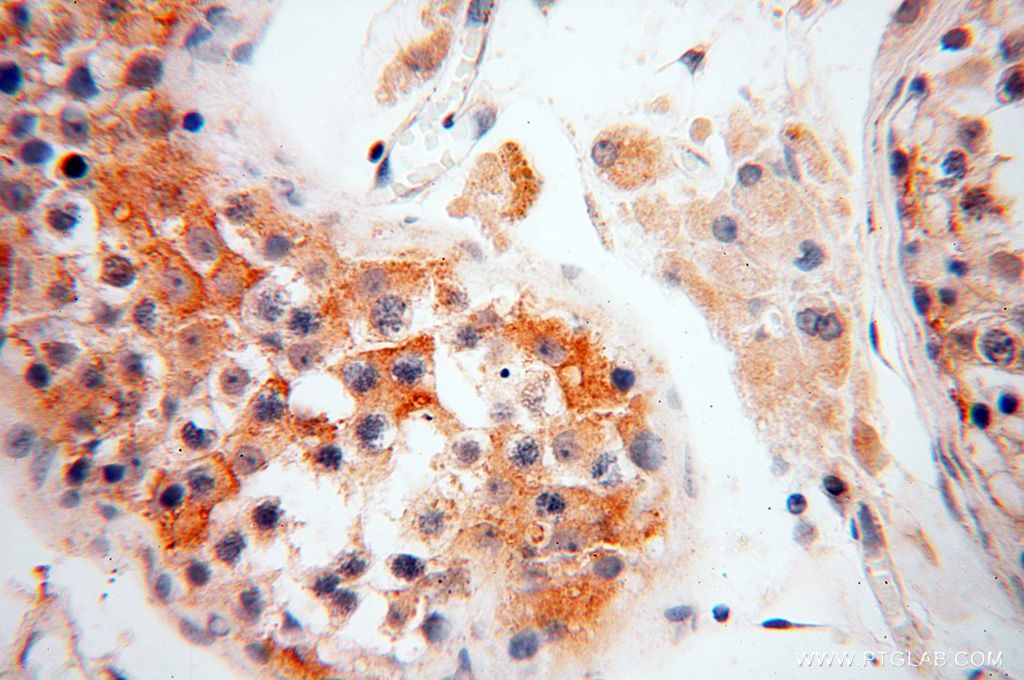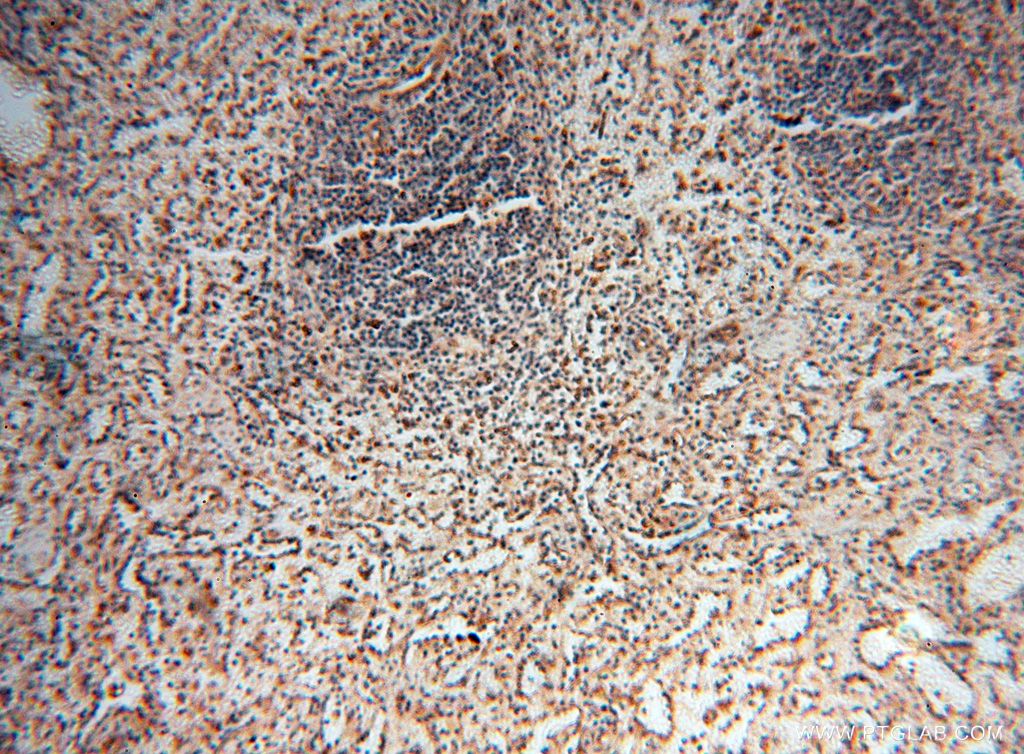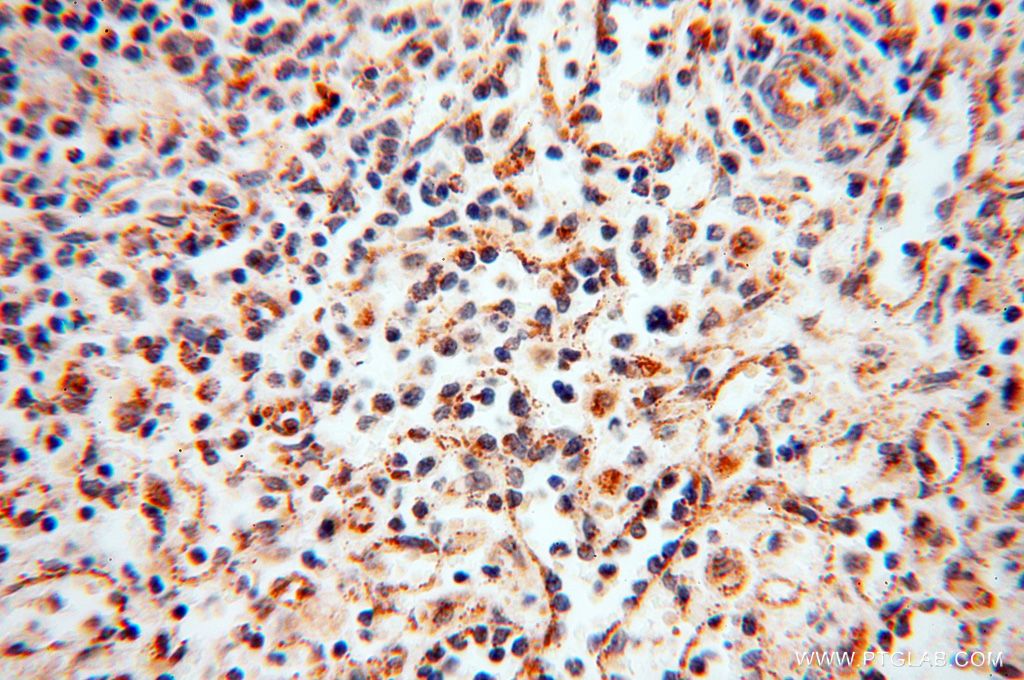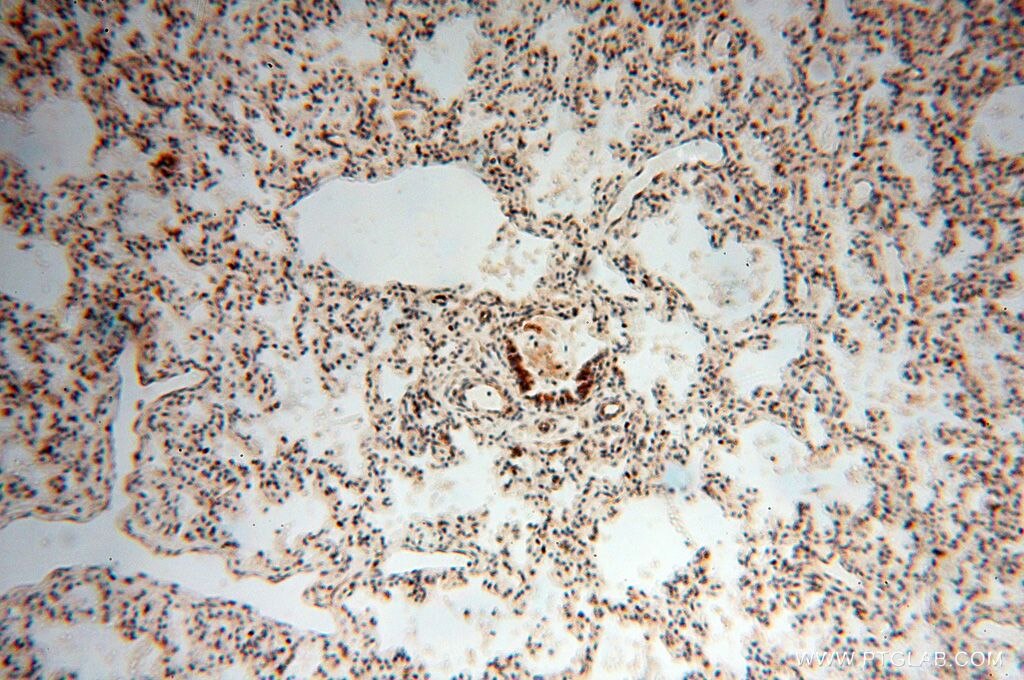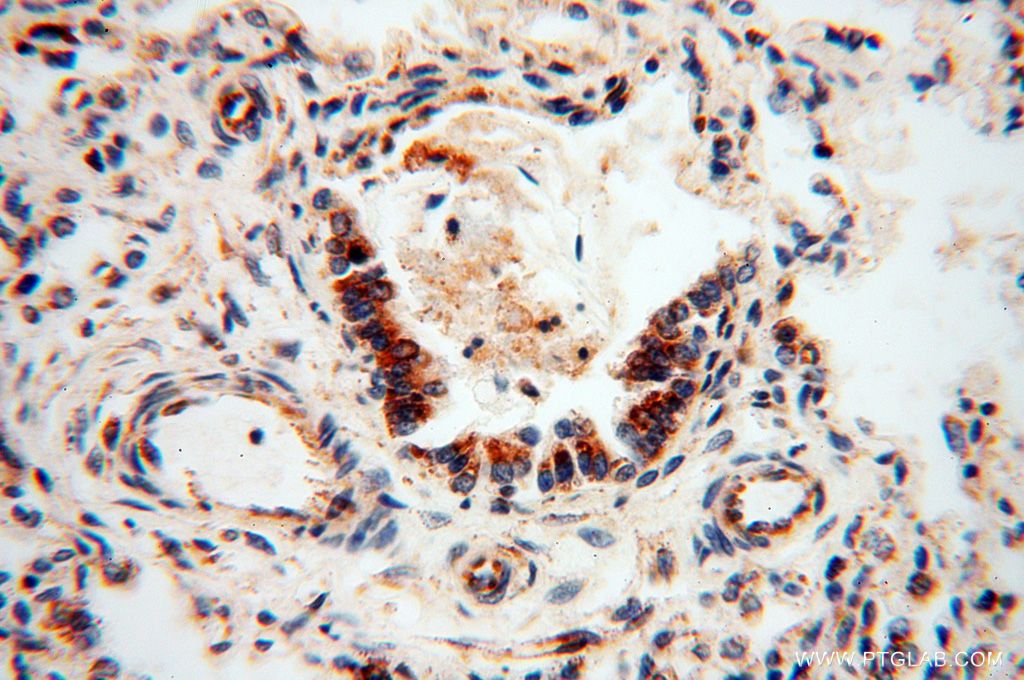- Phare
- Validé par KD/KO
Anticorps Polyclonal de lapin anti-SQRDL
SQRDL Polyclonal Antibody for WB, IHC, IP, ELISA
Hôte / Isotype
Lapin / IgG
Réactivité testée
Humain, rat, souris et plus (2)
Applications
WB, IHC, IP, ELISA
Conjugaison
Non conjugué
N° de cat : 17256-1-AP
Synonymes
Galerie de données de validation
Applications testées
| Résultats positifs en WB | cellules HeLa, cellules HepG, cellules HepG2, cellules HT-29, cellules THP-1 |
| Résultats positifs en IP | cellules HeLa |
| Résultats positifs en IHC | tissu cérébral de souris, tissu de cancer du côlon humain, tissu de cancer du foie humain, tissu hépatique de rat, tissu hépatique de souris, tissu pulmonaire humain, tissu splénique humain, tissu testiculaire humain il est suggéré de démasquer l'antigène avec un tampon de TE buffer pH 9.0; (*) À défaut, 'le démasquage de l'antigène peut être 'effectué avec un tampon citrate pH 6,0. |
Dilution recommandée
| Application | Dilution |
|---|---|
| Western Blot (WB) | WB : 1:1000-1:4000 |
| Immunoprécipitation (IP) | IP : 0.5-4.0 ug for 1.0-3.0 mg of total protein lysate |
| Immunohistochimie (IHC) | IHC : 1:50-1:500 |
| It is recommended that this reagent should be titrated in each testing system to obtain optimal results. | |
| Sample-dependent, check data in validation data gallery | |
Applications publiées
| KD/KO | See 3 publications below |
| WB | See 25 publications below |
| IHC | See 5 publications below |
Informations sur le produit
17256-1-AP cible SQRDL dans les applications de WB, IHC, IP, ELISA et montre une réactivité avec des échantillons Humain, rat, souris
| Réactivité | Humain, rat, souris |
| Réactivité citée | rat, Humain, porc, poulet, souris |
| Hôte / Isotype | Lapin / IgG |
| Clonalité | Polyclonal |
| Type | Anticorps |
| Immunogène | SQRDL Protéine recombinante Ag10762 |
| Nom complet | sulfide quinone reductase-like (yeast) |
| Masse moléculaire calculée | 450 aa, 50 kDa |
| Poids moléculaire observé | 50 kDa |
| Numéro d’acquisition GenBank | BC016836 |
| Symbole du gène | SQRDL |
| Identification du gène (NCBI) | 58472 |
| Conjugaison | Non conjugué |
| Forme | Liquide |
| Méthode de purification | Purification par affinité contre l'antigène |
| Tampon de stockage | PBS with 0.02% sodium azide and 50% glycerol |
| Conditions de stockage | Stocker à -20°C. Stable pendant un an après l'expédition. L'aliquotage n'est pas nécessaire pour le stockage à -20oC Les 20ul contiennent 0,1% de BSA. |
Informations générales
SQRDL(Sulfide:quinone oxidoreductase, mitochondrial) catalyzes the oxidation of hydrogen sulfide, with the help of a quinone.Although the SQRDL precursor protein displays a molecular weight of 50 kDa,a prominent band at about 46 kDa is detected by western blot. This discrepancy reflects the cleavage of an N-terminal targeting sequence of 4 kDa during the import of the protein into the mitochondria(PMID:22067608).SQRDL is one of the enzymes involved in H2S signaling in a discrete population of neurons, oligodendrocytes, and endothelial cells.
Protocole
| Product Specific Protocols | |
|---|---|
| WB protocol for SQRDL antibody 17256-1-AP | Download protocol |
| IHC protocol for SQRDL antibody 17256-1-AP | Download protocol |
| IP protocol for SQRDL antibody 17256-1-AP | Download protocol |
| Standard Protocols | |
|---|---|
| Click here to view our Standard Protocols |
Publications
| Species | Application | Title |
|---|---|---|
Cell Endogenous Hydrogen Sulfide Production Is Essential for Dietary Restriction Benefits.
| ||
Redox Biol Sulfide:quinone oxidoreductase alleviates ferroptosis in acute kidney injury via ameliorating mitochondrial dysfunction of renal tubular epithelial cells | ||
EMBO Mol Med β-RA reduces DMQ/CoQ ratio and rescues the encephalopathic phenotype in Coq9 R239X mice. | ||
EMBO Mol Med CoQ deficiency causes disruption of mitochondrial sulfide oxidation, a new pathomechanism associated with this syndrome. |
